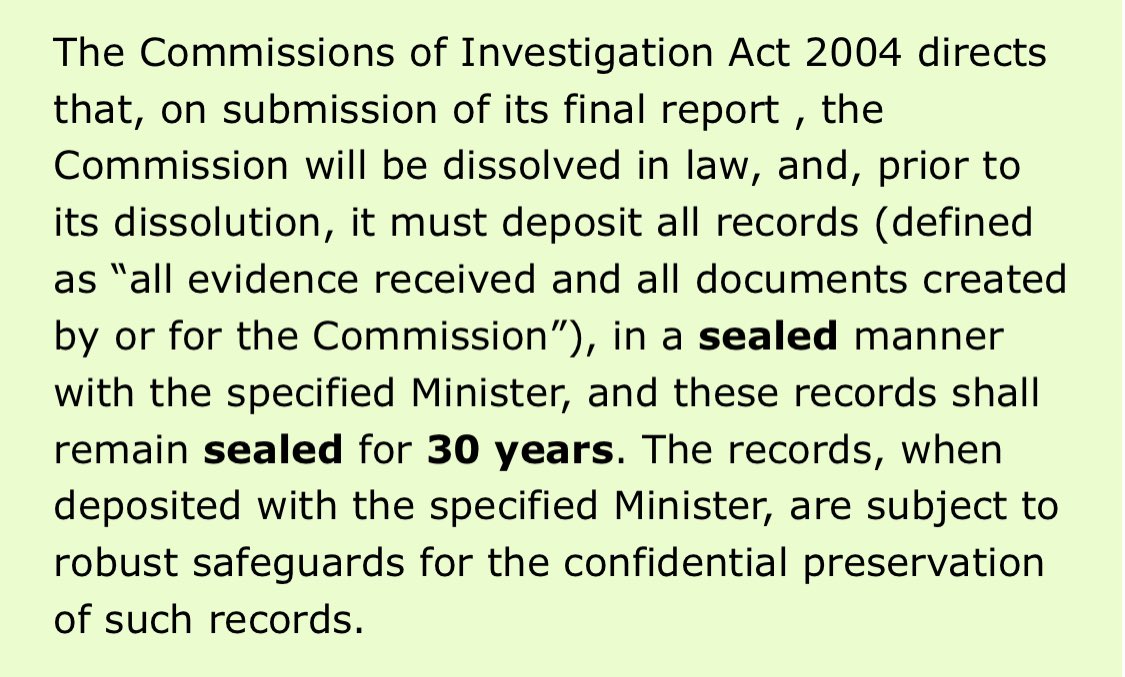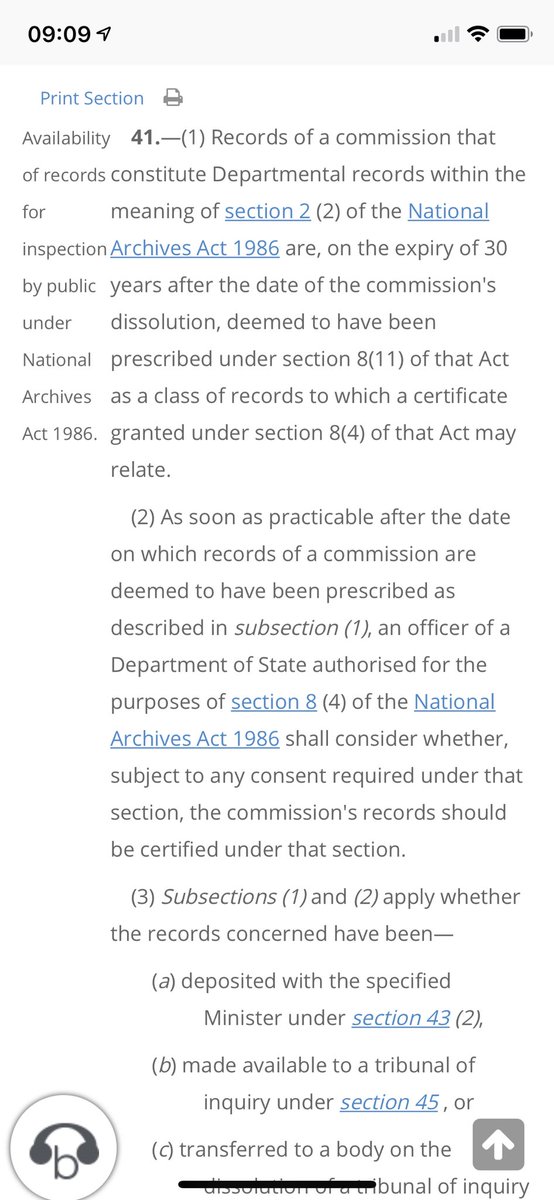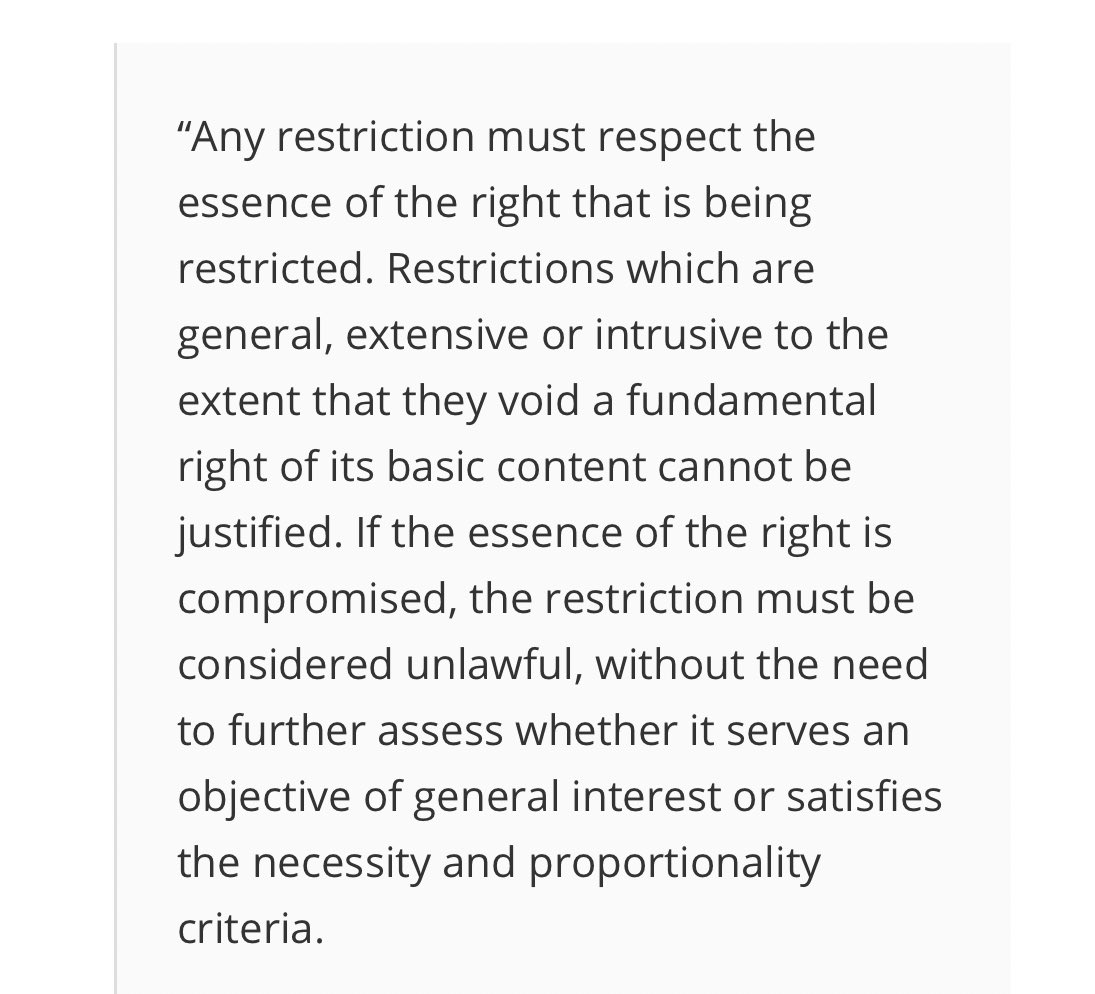Now that the Department of Children’s plan to seal the Mother and Baby Commission archive is so widely acknowledged to be wrongheaded that the President throws shade over it as he signs legislation, let’s try for some explanation of how this all happened.
Firstly, a reminder of exactly what the plan was from the Minister’s written answer to @GaryGannonTD from 29th Sept 2020.
“Those records shall remain sealed for 30 years”
This is to deal with any suggestions now being floated that there was never a plan to seal the archive.
“Those records shall remain sealed for 30 years”
This is to deal with any suggestions now being floated that there was never a plan to seal the archive.
But how did the Minister, who everyone acknowledges to be a person of good faith, end up the spokesman for a 30 year sealing of wronged people’s personal data?
It’s an important question because it prompts us to take an institutionalist view of power instead of a personal one.
It’s an important question because it prompts us to take an institutionalist view of power instead of a personal one.
Firstly, a statement of my general theory of the limits of Ministerial power.
They have two buttons on their desk, marked Go and Stop.
Ministers, like everyone, like being able to say they’re getting things done at work, so they love pressing Go.
They have two buttons on their desk, marked Go and Stop.
Ministers, like everyone, like being able to say they’re getting things done at work, so they love pressing Go.
But it is the unusual Minister- the strong personality or the grizzled old pro- who will look at a plan where years of preparatory work have been completed, where announcements have been made, where careers have been advanced and say
“Stop, we’re not doing that.”
“Stop, we’re not doing that.”
Now Ministers come and go but institutions like government departments have long memories. So, in 2002 (18 years ago, and a v different society) the then Minister Michael McDowell’s Department took a conventional view on records when drafting the 2004 Commissions of Inquiry Act.
And, as chance would have it, an insight into then Minister McDowell’s opinion on sealing the records of this particular Commission of Inquiry (unforeseen in 2004) is available to us through the proposed, pro-secrecy amendments of Senator McDowell this month.
But that opinion wasn’t what drove the in-house Departmental belief that there was a provision to seal records for 30 years in the 2004 Act he passed.
That idea came from a conventional wisdom approach to interpreting the Act.
C’mere, I’ll show you what I mean
That idea came from a conventional wisdom approach to interpreting the Act.
C’mere, I’ll show you what I mean
Here’s the clause of the 2004 Act that the Dept thinks created a 30 year seal.
This belief was widespread in officialdom.
But read it with me.
This belief was widespread in officialdom.
But read it with me.
Firstly, though this is not conclusive of anything, note the purpose of this section, written in little letters in the margin. It deals with “Availability of Records”
The opening thrust of intent is that this is about making records available, not sealing them.
The opening thrust of intent is that this is about making records available, not sealing them.
But it’s not trying to determine the policy for availability of records for all purposes.What it’s doing is ensuring that Commission records will be treated in such a way that- no matter what- they will be examined and made available after 30 years under the National Archives Act
Think of it as a backstop for transparency- that 30 years is not a target for openness, it’s a deadline.
But if that’s so, why did all the officials read it as saying it sealed the records for 30 years?
Because- and I can’t stress enough the power of this phrase- That’s How It Has Always Been Done.
That’s the presumption of secrecy which Governments have applied to their records.
Because- and I can’t stress enough the power of this phrase- That’s How It Has Always Been Done.
That’s the presumption of secrecy which Governments have applied to their records.
So when the Dept (and, it seems the Commission) saw a clause imposing the openness *requirement* after 30 years from the National Archives Act, they mentally classified it as being subject to the usual secrecy *policy*.
In short, as Senator Higgins correctly explained in her excellent contribution to this podcast, there was never a legal requirement for a 30 year seal.
Sorry, podcast link: https://tortoiseshack.ie/ep-383-a-stand-for-truth-special/">https://tortoiseshack.ie/ep-383-a-...
Now, we should address the question of what if the 2004 Act had included a positive statement that its records were to remain sealed for 30 years.
Well, in that counter-factual circumstance, there would still be no legal bar on people seeking copies of records relating to them.
Well, in that counter-factual circumstance, there would still be no legal bar on people seeking copies of records relating to them.
That’s because to blanket block access for 30 years would be to try to legislate to restrict the essence of an EU Law right.
Here’s the conventional statement on national laws that try to do that, from the European Data Protection Board:
Here’s the conventional statement on national laws that try to do that, from the European Data Protection Board:
That what the DPC told the Dept too.
We don’t know when the Minister found out they’d done that. https://www.irishexaminer.com/news/arid-40070054.html">https://www.irishexaminer.com/news/arid...
We don’t know when the Minister found out they’d done that. https://www.irishexaminer.com/news/arid-40070054.html">https://www.irishexaminer.com/news/arid...
And that’s why the President was right to both sign the Act, and to remark that people can always challenge a *policy* if they think it’s wrong.
As Gov TDs have bleated, this 2020 act doesn’t create a 30 year seal.
It’s the policy (which wasn’t in front of MDH) which tried that
As Gov TDs have bleated, this 2020 act doesn’t create a 30 year seal.
It’s the policy (which wasn’t in front of MDH) which tried that
So, if you’re wondering how Minister O’Gorman could have done this- or you’re in the Green Party or another govt party and you can’t understand how you ended up being asked to stand again victim’s rights, I invite you to take an institutionalist view;
Like a human body, most things in a Govt department are done without the specific and conscious direction of the Minister. In the same way that your body pumps blood, sucks in air and blows it out, digests food etc without you having to make it.
And the institution will just carry on doing the same things unless the Minister consciously decides they have to change.
Unfortunately, historically, Ministers have responded more to pressure and criticism (we’ll call it heat) than to reasoned argument (call it light).
Unfortunately, historically, Ministers have responded more to pressure and criticism (we’ll call it heat) than to reasoned argument (call it light).
This week has seen lots of heat, but also a lot of light.
And that’s the best combination- that’s what makes things better.
Sign the uplift petition if you haven’t already, contact your TDs. That’s what makes the heat that will shine the light.
And that’s the best combination- that’s what makes things better.
Sign the uplift petition if you haven’t already, contact your TDs. That’s what makes the heat that will shine the light.
There are unpleasant creatures who are drawn to heat- on any subject- and will try to co-opt it.
They are allergic to light, to any sort of reasoned argument.
We can safely leave them by themselves in the dark where they belong.
They are allergic to light, to any sort of reasoned argument.
We can safely leave them by themselves in the dark where they belong.

 Read on Twitter
Read on Twitter




